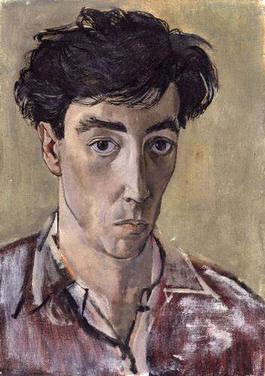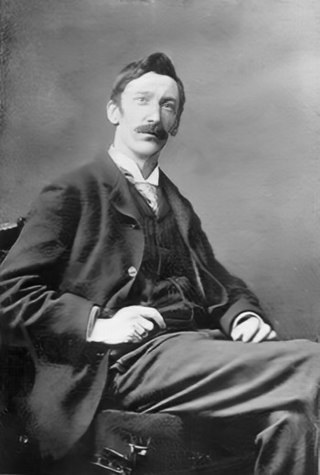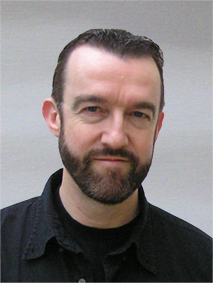
Psychedelia usually refers to a style or aesthetic that is resembled in the psychedelic subculture of the 1960s and the psychedelic experience produced by certain psychoactive substances. This includes psychedelic art, psychedelic music and style of dress during that era. This was primarily generated by people who used psychedelic drugs such as LSD, mescaline and psilocybin and also non-users who were participants and aficionados of this subculture. Psychedelic art and music typically recreate or reflect the experience of altered consciousness. Psychedelic art uses highly distorted, surreal visuals, bright colors and full spectrums and animation to evoke, convey, or enhance the psychedelic experience. Psychedelic music uses distorted electric guitar, Indian music elements such as the sitar, tabla, electronic effects, sound effects and reverb, and elaborate studio effects, such as playing tapes backwards or panning the music from one side to another.

Léon Bakst, born Leyb-Khaim Izrailevich Rosenberg was a Russian painter and scene and costume designer of Jewish origin. He was a member of the Sergei Diaghilev circle and the Ballets Russes, for which he designed exotic, richly coloured sets and costumes. He designed the décor for such productions as Carnaval (1910), Spectre de la rose (1911), Daphnis and Chloe (1912), The Sleeping Princess (1921) and others.
Mark Wilkinson is an English illustrator. He is best known for the detailed surrealistic cover art he created for a number of British bands.

Francis John Minton was an English painter, illustrator, stage designer and teacher. After studying in France, he became a teacher in London, and at the same time maintained a consistently large output of works. In addition to landscapes, portraits and other paintings, some of them on an unusually large scale, he built up a reputation as an illustrator of books.

Stanhope Alexander Forbes was a British artist and a founding member of the influential Newlyn school of painters. He was often called 'the father of the Newlyn School'.

Mr and Mrs Andrews is an oil on canvas portrait of about 1750 by Thomas Gainsborough, now in the National Gallery, London. Today it is one of his most famous works, but it remained in the family of the sitters until 1960 and was very little known before it appeared in an exhibition in Ipswich in 1927, after which it was regularly requested for other exhibitions in Britain and abroad, and praised by critics for its charm and freshness. By the post-war years its iconic status was established, and it was one of four paintings chosen to represent British art in an exhibition in Paris celebrating the Coronation of Queen Elizabeth II in 1953. Soon the painting began to receive hostile scrutiny as a paradigm of the paternalist and capitalist society of 18th-century England, but it remains a firm popular favourite.

Hapshash and the Coloured Coat was an influential British graphic design and avant-garde musical partnership in the late 1960s, consisting of Michael English and Nigel Waymouth. It produced popular psychedelic posters, and two albums of underground music.
Paul Gorman is a British-Irish writer and curator.
John Stephen, dubbed by the media the £1m Mod and the King Of Carnaby Street, was one of the most important fashion figures of the 1960s.
The V.I.P.'s were a British R&B musical ensemble formed in Carlisle, Cumberland, England in late 1963, out of an earlier outfit known as The Ramrods, who had formed in Carlisle in 1960. From a musical reorientation the band changed their name to Art in 1967, and released the album Supernatural Fairy Tales.

Granny Takes a Trip was a boutique opened in February 1966 at 488 Kings Road, Chelsea, London, by Nigel Waymouth, his girlfriend Sheila Cohen and John Pearse. The shop, which was acquired by Freddie Hornik in 1969, remained open until the mid-1970s and has been called the "first psychedelic boutique in Groovy London of the 1960s".
Karl Ferris is an English music photographer/designer. He worked on album covers for Eric Clapton, Cream, Donovan, The Hollies and Jimi Hendrix.
Lloyd William Johnson is an English fashion entrepreneur.

Nigel Cox is an Irish figurative artist.
Michael English was a British artist known for poster designs he created in the 1960s for musicians such as Jimi Hendrix in collaboration with Nigel Waymouth and the design company they established, Hapshash and the Coloured Coat, and for several series of hyper realist paintings in the 1970s and 1980s.
Mr Freedom was a clothing boutique in London which sold fashion by a number of young designers commissioned by the owner, designer Tommy Roberts, and his partner, Trevor Myles. Celebrities such as Freddie Mercury and Elton John wore designs from the shop which was at 430 King's Road in Chelsea, London from 1969–70 and then at 20 Kensington Church Street in Kensington.
Michael Sean O'Dare Rainey was an Australian-born British fashion designer, best known for his 1960s London boutique, Hung On You.
Gerald McCann was a British fashion designer who was considered among the leading lights of the Swinging London fashion scene, alongside names such as Mary Quant, subsequently moving to the United States to continue his career with Larry Levine.
Louis Alexander Philip Waymouth is an English writer and actor best known for his work on The Late Late Show with James Corden.

Polly Hurry, was an Australian painter. She was a founding member of the Australian Tonalist movement and part of the Twenty Melbourne Painters Society.








